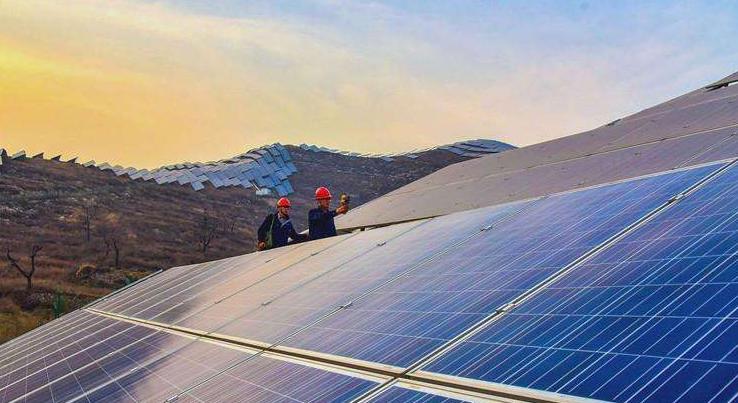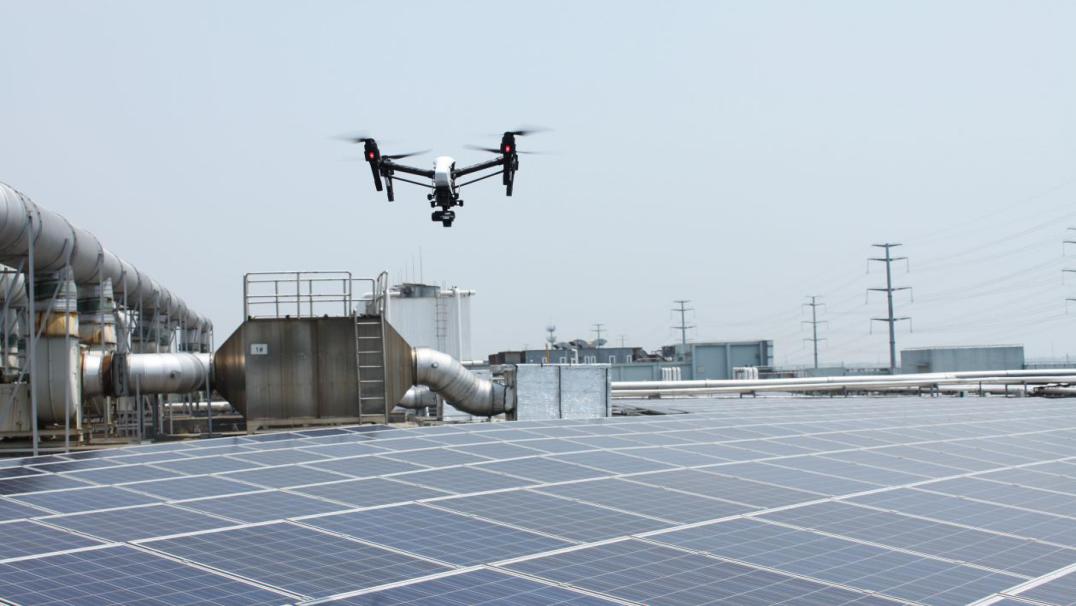With the expansion of industrial scale, such as photovoltaic, power, bridges, construction and other industries, heavy and inefficient manual inspection is more and more difficult to meet the needs of the industry, and urgently needs the injection of new technologies. In the past few years, more and more industries have tried to apply intelligent robots to work.
After nearly a decade of development, intelligent robots not only exist in production lines, but also penetrate into the various life such as clothing, food, housing and transportation. However, most of the functional components of robots are heterogeneous and distributed, which can not complete communication and cooperation. For some complex scenes, such as photovoltaic inspection, mining and city management are not competent.
Therefore, the 3rd generation of robotics - ubiquitous robot came into being.
Bottlenecks in traditional robotics
"I have been doing manual inspection for three years, but I still found so many problems every day. But with a smart photovoltaic solution, you just press a button and do better than he did for a year." This is the exclamation of a person engaged in the operation and maintenance of photovoltaic power station after seeing the application of ubiquitous robot technology in the photovoltaic.
It is generally believed that ubiquitous robot technology is the product of the combination of robot technology component and network. It is based on the need for scenarios that traditional robots are not competent for. It is also known as the 3rd generation of robotics because it is a qualitative leap forward for the development concept of traditional robots.
It is understood that in the traditional photovoltaic power station in early-stage pre-survey process , the original blueprint of buildings were used as a reference of measurement when carrying out calculations. And an alternative is for workers to manually scale the roofs and take measurements by hand.
Due to the particularity and complexity of the industry, traditional robots are not competent for the later operation and maintenance of photovoltaic products. It can only use human patrol which also faces many problems.
Photovoltaic products cover a wide area, and inspection is easily affected by climate and other factors, so the efficiency of traditional manual inspection is extremely low. At the same time, in the process of inspection, inspection results are based on the staff's experience in detecting damages, which commonly result in deviations of the reliability of inspection results. It is understood that China spends about 10 billion yuan on photovoltaic every year.

Similar problems also appear in the mining. The traditional mining industry needs people to drive excavators into the mountains for mining, and then they drive tramcar to transport ore and other materials. Due to the complex geological conditions on the mine, there is a risk of collapse at any time. These hidden security problems have been criticized for a long time. Because of these problems, some mines have been unable to recruit.
The application of ubiquitous robot technology is expected to solve these industry problems.
In short, the method is to transform traditional equipment into "robots" through intelligent transformation, and then connect IOT, cloud computing and other technologies to cloud platform, so that multiple machines can realize data exchange and work together. Compared with a single robot, ubiquitous robot technology pays more attention to multi-robot cooperation and intelligent environment.
The technology itself is more global and involves more subdivision techniques, so it is different from the robot market with single application scenarios such as industrial robot and service robot. The accumulation of ubiquitous robot field is relatively weak and the concept is novel. There are few manufacturers exploring in the market.
Machine Interconnection
Fortunately, at present, some enterprises have conducted in-depth research on this issue, and Boonray technology is such a business. At present, the products of Boonray technology have been used in photovoltaic inspection, mine operation and park management and other vertical fields.
”The focus of ubiquitous robot technology is not on data collection or how complex the robot are, but on machine-to-machine communication and human-robot interaction. In short, we prefer the design of the whole system." Boonray technology founder and CEO Hu Xinyi said publicly.
Taking the application of unmanned patrol inspection in photovoltaic power station as an example, based on the needs of scene application, Boonray technology has installed network connected automatic control module and airborne control modules on drones, so that drones can realize automatic take-off, automatic data acquisition, and automatic charging with UAV apron. These hardware also improves the data acquisition, transmission and processing of drone.
With the support of the above hardware, the App developed by Boonray Technology can also realize the functions of flight route planning, setting of flight area, cloud connectivity and account control. With the "Boonray Cloud" processing platform, drone can also quickly discover hot spots through infrared rays.

As shown in the figure above, Boonray Photovoltaic Drone Inspection Diagnostic System solves the problems such as the vast area of the power station, uneven terrains, the difficulty of manual climbing to the top, and the vulnerability to the climate influence, which greatly reducing the labor cost and improving the inspection efficiency. The photovoltaic intelligent inspection scheme of Boonray Technology can achieve 100% inspection of 20MW a day, which is 10 times of the efficiency of manual inspection.
Based on the successful drone project, the ubiquitous robot technology of Boonray Technology has also extended to the automated transportation scene in the mine field. Generally speaking, the “Smart Mining" of Boonray Technology can be divided into "air" and "land". In "air", we use drones to scan the whole mining area, 3d modeling technology and other technologies to build a high-precision mining map, and builds 5G network for the mining area.
"Land" is to transform the traditional tramcar. The tramcar are equipped with LIDAR and cameras which are mounted to perceive the external environment. And also combine computer vision+inertial navigation+ high precision RTK GPS survey system, obstacle recognition, route planning and real-time feedback control algorithm, so as to mining trucks are able to autonomously drive, avoid obstacles and carry out driving maneuvers such as reversing.
In addition, with the special road and the unified control center, we can carry out intelligent monitoring and intelligent dispatching of autonomous dump truck. So, the autonomous dump truck and 5g remote excavator can be linked to realize the unmanned mine, and fundamentally avoid the problem of casualties.
It is understood that the "smart mining unmanned transport" has been used in a large mine in Luoyang. A total of 40 unmanned tramcar put into use, achieving a capacity of 500,000 tons per month. In the future, Boonray technology will also continue to deepen the "smart mining" development.
In addition, Boonray Technology has also involved in the management of public space.
Based on drone, IOT, AI, image recognition and other technologies, Boonray Technology has developed a special urban management solution.
In short, Boonray Technology builds 3D maps based on current urban systems. All data points of an area can be clearly visualized based on their geographical location. Through the comparison of records, allows one to observe and study the changes over time.
In the urban public space management, Boonray Technology created the air patrol mode. "God's perspective" is be used to monitor traffic, river, illegal parking, human trampling and other management blind spots. In Zhangjiang Artificial Intelligence Island, Boonray Technology also connects drone patrol with security robot, unmanned ship, underwater robot and various sensors , realizing the mutual cooperation between multiple robots and sensors.
Hu Xinyi, CEO of Boonray Technology said that the scheme can realize public safety management, river monitoring and so on. It is understood that "smart city management solutions" have been applied in Yuhang City management, Zhangjiang Artificial Intelligence Island and Shanghai Xuhui District.
At present, Boonray Technology has serves more than 200 well-known enterprises in the industry. It has won the Million Dollar Angel Wheel Investment from Lianchuang Yongxuan,
tens of million yuan from 23seed and Tuojin. In addition, the company has obtained more than 40 intellectual property rights and patents, and has a profound reserve in the underlying architecture and algorithm. We may be able to see the era of ubiquitous robots from the Boonray Technology.

微信公众号
Shanghai Headquarters Address: 6F, Block B, Building 1, No. 800, Zhangjiang Naxian Road, Pudong New Area, Shanghai
Tel: 021-58212107 Post Code: 200124
Address of Hangzhou Branch: Building 9, No. 1818-2, Wenyi West Road, Yuhang Street, Yuhang District, Hangzhou
Contact number: 0571-87562630 Zip code: 311121
Email: sale@boonray.com
Copyright©2018 Shanghai Boonray Intelligent Technology Co., Ltd. All rights reserved
Terms of use Legal Notices